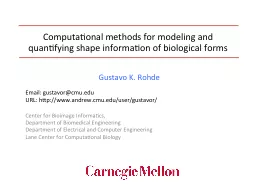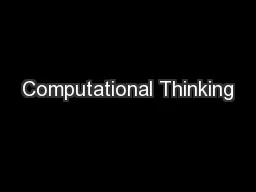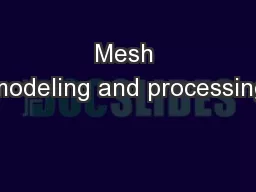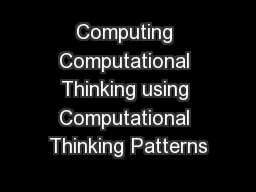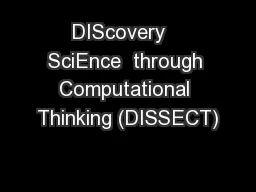PPT-Computational methods for modeling and quantifying shape information of biological forms
Author : PlayfulPenguin | Published Date : 2022-08-01
Gustavo K Rohde Email gustavorcmuedu URL http wwwandrewcmuedu user gustavor Center for Bioimage Informatics Department of Biomedical Engineering Department
Presentation Embed Code
Download Presentation
Download Presentation The PPT/PDF document "Computational methods for modeling and ..." is the property of its rightful owner. Permission is granted to download and print the materials on this website for personal, non-commercial use only, and to display it on your personal computer provided you do not modify the materials and that you retain all copyright notices contained in the materials. By downloading content from our website, you accept the terms of this agreement.
Computational methods for modeling and quantifying shape information of biological forms: Transcript
Download Rules Of Document
"Computational methods for modeling and quantifying shape information of biological forms"The content belongs to its owner. You may download and print it for personal use, without modification, and keep all copyright notices. By downloading, you agree to these terms.
Related Documents

